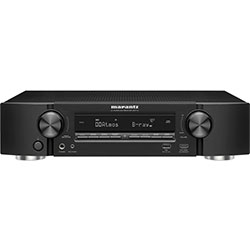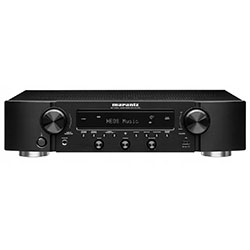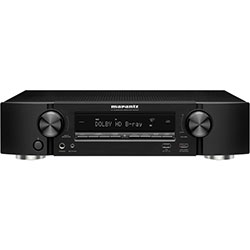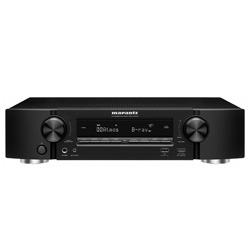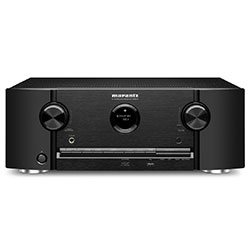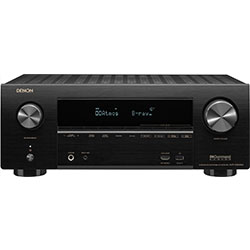 In 2019 Marantz introduced new slim-case AV receiver, the older model in this series - 7.2-channel Marantz NR1710 AV receiver. See this Marantz NR1710 review for Marantz NR1710 specs and other interesting features.
In 2019 Marantz introduced new slim-case AV receiver, the older model in this series - 7.2-channel Marantz NR1710 AV receiver. See this Marantz NR1710 review for Marantz NR1710 specs and other interesting features.
Marantz NR1710 review
Features
The Marantz NR1710 AV Receiver is a 7.2-channel AV receiver with a low case and full 3D sound thanks to the support of the DTS: X and Dolby Atmos formats in 5.1.2-channel configuration. The Marantz NR1710 model works with the DTS Virtual: X format, which allows you to create an imitation of the sound of ceiling speakers in ordinary surround sound systems that are not equipped with specialized speakers. The receiver also knows how to scale any video to 4K resolution. Seven high-current discrete amplifiers provide 90 watts per channel at 6 ohms, and the AV receiver works reliably even with a 4-ohm load.
Design and build
There is a Bluetooth circuit on board, AirPlay 2 support is announced with the possibility of organizing a multi-room system based on iOS devices. The model copes with the role of a streamer, playing on a local network and USB Hi-Res-audio formats (PCM up to 24 bit / 192 kHz and DSD up to 5.6 MHz).
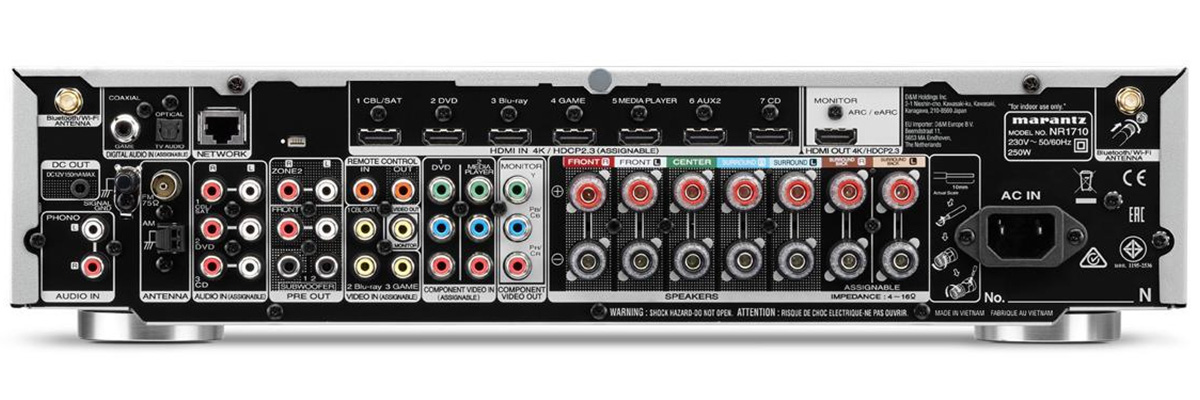
Connectivity
The Marantz NR1710 AV receiver has one HDMI input on the front and seven HDMI inputs on the back. All of them support HDCP 2.2 protocol and 4K resolution (60 Hz), as well as HDR10, Dolby Vision and HLG video standards with extended dynamic range. There is an HDMI output with eARC return channel and an MM phono equalizer. There are coaxial and optical inputs, 2.2-channel Pre Out and one Pre Out for the second zone. Speakers are connected to seven pairs of screw terminals, each of which is marked with a specific color.
Setup
Audyssey MultEQ helps calibrate speakers. In addition, the model uses technologies to optimize volume and frequency response - Dynamic Volume and Dynamic EQ. Audyssey MultEQ system is used to set up the speakers in accordance with the geometry and acoustic features of the room. The technology uses Dynamic Volume (normalizes the volume, which is convenient when watching broadcasts with ads) and Dynamic EQ (optimizes the frequency response in order to get full sound in a wide frequency band with full-weight bass even at low volume levels).
Pros and Cons
Pros
- The microphone provided made setup easy
- To control the Marantz NR1710 provides a full-time remote, proprietary application and even personal assistant Amazon Alexa
Cons
- Needs a lot of tweaking to be optimized on high end system
Common features
Product
Model
Brand
Reviews
Amplifier
Channels
Stereo power (RMS), W/Ohm
Output impedance, Ohm
Frequency response
THD in stereo, %
Audio features
Digital to analog converter (DAC)
Bi-amping
Pure direct (straight)
Auto speaker calibration
Speaker A/B switching
Other audio features
Connectivity
Wi-Fi
USB
Bluetooth
Ethernet (RJ45)
DLNA
MHL
Streaming services
Apple Music (AirPlay)
Amazon Music
Spotify
Other streaming services
Extensive connection
HDMI input/output
HDMI ARC (Audio Return Channel)
HDMI eARC (Enhanced Audio Return Channel)
HDMI CEC
Digital content protection (HDCP)
Subwoofer output (LFE)
Headphone output
Optical digital input
Coaxial digital input
Composite input
Component input/output
Phono (MM) input
Front panel connectors
Multi channel preamp output
Video features
HDR (High Dynamic Range)
4K signal pass-through
8K signal pass-through
HDMI signal pass-through
3D signal pass-through
HDMI pass-through in standby mode
Video conversion
Analog to HDMI scaling
HDMI to HDMI scaling
Dolby Vision
Other video features
Additional features
Voice control
App control
Display
Tuner
Sleep timer
Auto power off
ECO mode
Graphical user interface (GUI)
Setup assistant
Firmware update
Other additional features
Multi-room
Multi-room zones
Zone audio output
Zone HDMI output
Multi-room control
RS-232
Remote control input/output (IR)
DC trigger output (12V)
Multichannel surround
Dolby Atmos
Dolby TrueHD
Dolby Surround
Dolby (other)
DTS:X
DTS HD Master
DTS Virtual:X
DTS Neural:X
DTS (other)
Auro-3D
IMAX Enhanced
Multichannel stereo
Audio file formats
MP3
WMA
AAC
WAV
FLAC
ALAC
Other audio file formats
Power
Operational power consumption, W
Standby consumption, W
Removable power cord
User manual
Manual
Dimensions
Size W x H x D, cm/inches
Weight, kg/lbs
Other
Release year


